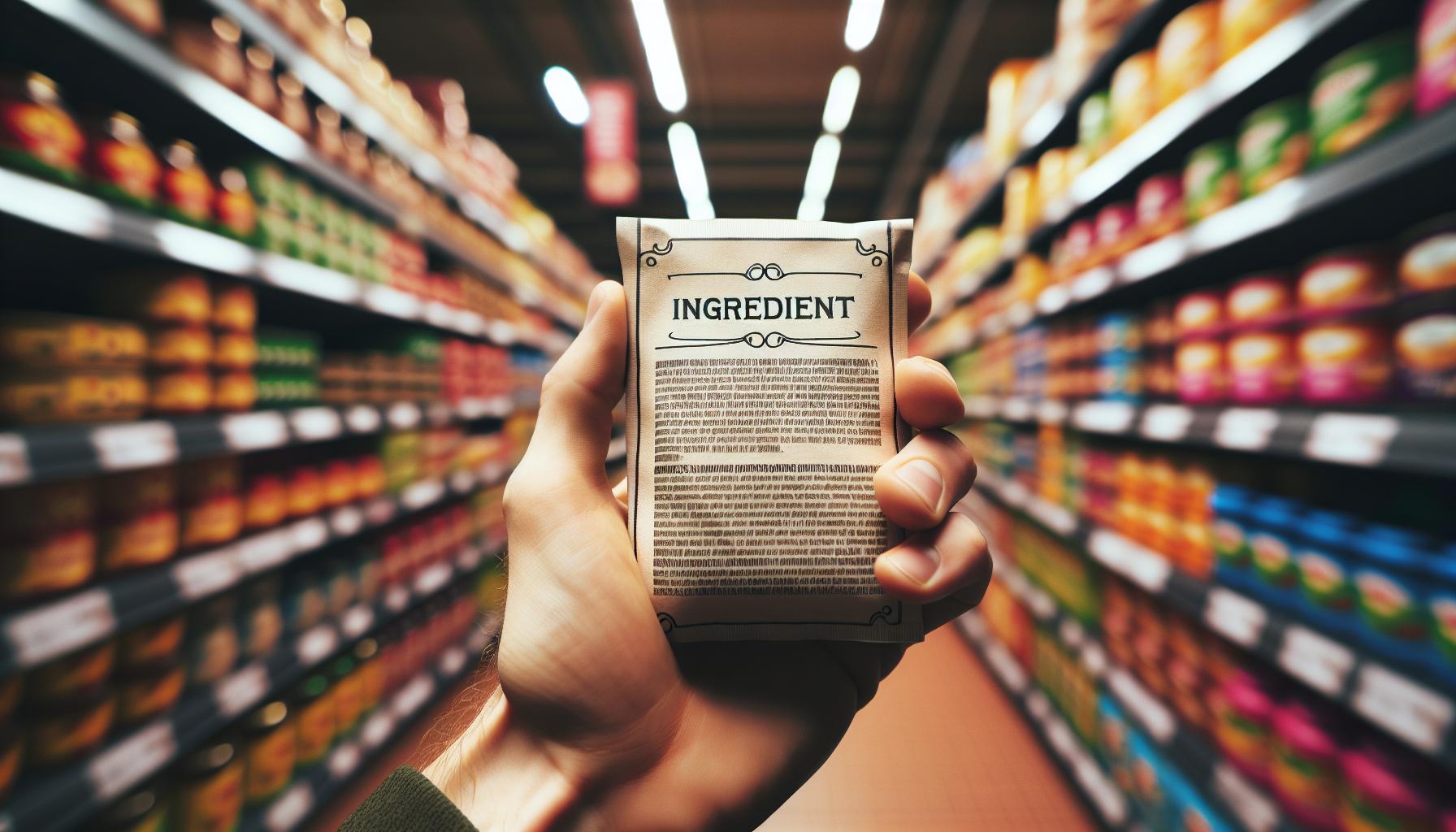“`html Healthspan and Longevity: 5 Charts Explaining the Healthy Aging Consumer Are you curious about how people are living longer and healthier lives? The healthy aging consumer is driving a new market for nutritious foods, wearable tech, and wellness services. In this article, we’ll break down five insightful charts that reveal who these consumers are, what they buy, and why it matters to you. By the end, you’ll have clear data and practical tips to boost your own healthspan and longevity. Let’s dive in and explore the trends that can help you make informed, healthy choices. Understanding Healthspan and Longevity: Key Definitions and Trends Before we explore the charts, we need clear definitions. Longevity is the total number of years a person lives. Healthspan refers to the number of those years spent in good health, free from chronic disease or disability. According to the World Health Organization, the global population over age 60 will double by 2050. That means more people are seeking ways to add quality years, not just extra years. Major trends in healthy aging include: Functional nutrition: Foods rich in antioxidants and anti-inflammatory compounds. Smart wearables: Devices that track sleep, heart rate, and activity. Preventive care: Regular screenings and personalized health plans. Wellness experiences: Spa retreats, meditation apps, and fitness classes. Data from Mayo Clinic shows that lifestyle factors like diet, exercise, and stress management can add up to 10 healthy years to your life. Clinicians at the NIH support this: small changes in habits can have big impacts on healthspan. Understanding these terms and trends helps set the stage for our five charts. Chart 1: Age Demographics of the Healthy Aging Consumer The first chart breaks down the age groups most engaged in healthy aging products. Data shows four main segments: 55–64 years old: 35% of market share 45–54 years old: 25% 65+ years old: 20% 35–44 years old: 15% Under 35 years old: 5% These numbers highlight that the 55–64 bracket leads the way. Many in this group are planning retirement, monitoring health markers, and boosting nutrient intake. However, younger consumers are catching up as awareness grows. Key takeaways from this chart: The “pre-retirement” phase (55–64) targets supplements, smart watches, and health apps. Mid-life adults (45–54) invest in fitness memberships and personalized meal plans. Seniors (65+) focus on bone health, joint support, and social wellness programs. Marketers can use this data to tailor messages. For example, a clean-label protein product might appeal to the 45–54 group, while mindfulness apps could target 35–44. To explore ingredient scanning tools, check out our features page. Chart 2: Healthspan vs. Lifespan: What Consumers Want This chart compares how consumers prioritize healthspan versus lifespan. Survey data indicates: Priority Percentage of Respondents Extend Lifespan 30% Improve Healthspan 50% Balance Both 20% Half of all consumers aim to improve healthspan, not just live longer. They want years free of chronic illness. This trend aligns with research from PubMed, indicating that lifestyle factors can compress morbidity into a shorter period at life’s end. Why this matters: People seek real, daily benefits like energy, mobility, and mental clarity. Brands that promise a longer life must also prove quality-of-life improvements. Education on balanced nutrition is critical — see our nutrition guide. The graph also shows a gap between perception and action. While 50% say healthspan is vital, only 30% follow a structured preventive program. Bridging that gap is an opportunity for health coaches, digital apps, and nutraceutical companies. Chart 3: Top Healthy Aging Habits and Purchases Here we list the five most common habits and purchases among healthy aging consumers: Dietary supplements (70%) Regular exercise memberships (65%) Wellness apps and wearables (55%) Functional foods (50%) Mind-body practices (45%) Functional foods include items like probiotic yogurt, antioxidant berries, and omega-3 rich seeds. According to Harvard Health, adding these foods supports cognitive function and heart health. Editor’s Note: A balanced plate often shines brighter than a single “superfood.” Pair vitamin-rich veggies with lean protein and healthy fats to get the most benefit. Many consumers use ingredient scanners to check additives and allergens before purchasing. A user testimonial: “Using Food Scan Genius helped me choose snacks that fit my heart-health goals,” says Emily, 58. If you want to try this yourself, visit our pricing plans. Chart 4: Spending Patterns on Wellness Products This chart shows average annual spending per consumer group on wellness products: Product Category Average Spend Supplements $350 Fitness & Gym $400 Wearables $250 Healthy Foods $500 Mental Wellness $200 The highest spend is on healthy foods, with a $500 annual average. This reflects a shift away from pills toward real, whole-food solutions. The trend is backed by data from the Cleveland Clinic, which reports that nutrient-dense diets help maintain muscle mass and cognitive health. Wellness marketers can note: Bundling products (e.g., supplement + recipe box) may increase average order value. Loyalty programs for healthy foods drive repeat purchases. Educational content on product benefits builds trust. For custom wellness packages or questions, get personalized tips from our experts. Chart 5: Consumer Trust in Health Information Sources Trust is key. This chart reveals the percent of consumers who trust each information source: Medical professionals (80%) Government agencies (65%) Health apps & wearables (50%) Social media influencers (30%) Friends & family (45%) Medical professionals top the list. The FDA and Nutrition.org both stress the importance of evidence-based guidance. As trust in social media dips, brands must partner with clinicians or reputable scientists to share secure, fact-checked information. Action points for communicators: Include citations from peer-reviewed sources like PubMed. Offer expert Q&A sessions via webinars or podcasts. Display credentials and certifications prominently. Actionable Strategies for Boosting Your Healthspan Today Now that you’ve seen the data, here are practical steps to enhance your healthspan: Eat nutrient-rich foods: Focus on vegetables, lean proteins, and whole grains. Move regularly: Aim for at least 150 minutes of moderate exercise per week. Prioritize sleep: Strive for 7–8 hours of quality rest each night. Manage stress: Practice meditation, yoga, or mindful breathing. Stay socially
How To Spot Milk Ingredients To Avoid While Grocery Shopping
Navigating a milk allergy can feel overwhelming, especially when shopping for groceries. With so many products on the shelves, it’s crucial to know what to avoid. This guide will help you identify common milk-derived ingredients, read labels effectively, and make informed choices, ensuring you stay safe while enjoying your favorite foods. Let’s dive in! Table Of Contents Understanding Milk Allergies Common Milk-Derived Ingredients to Avoid How to Read Food Labels for Milk Allergens Supermarket Shopping Tips for Milk Allergy Management Trusted Resources and Tools for Milk Allergy Management Practical Advice for Families Managing Milk Allergies Conclusion Related Posts Frequently Asked Questions (FAQs) Sources Key Takeaways Understanding the difference between a milk allergy and lactose intolerance is crucial for proper management and treatment. Always read food labels carefully, looking for both obvious and hidden milk-derived ingredients to avoid allergic reactions. Familiarize yourself with the Food Allergen Labeling and Consumer Protection Act (FALCPA) to better navigate food packaging and allergen disclosures. Explore safe food alternatives, such as plant-based milk options, to maintain a balanced diet while avoiding milk allergens. Educate and empower children with milk allergies to make safe food choices, fostering independence and confidence in their dietary management. Understanding Milk Allergies What is a Milk Allergy? A milk allergy is a type of food allergy where your immune system reacts negatively to proteins found in milk, most commonly casein and whey. Unlike lactose intolerance, which is a digestive issue, a milk allergy can trigger serious immune responses, including hives, swelling, or even anaphylaxis. It’s one of the most common food allergies, especially in children, though some adults experience it too. If you’re managing a milk allergy, tools like Food Scan Genius can help you identify hidden milk ingredients in products. Their platform simplifies label reading and ensures you avoid risky items while shopping. Symptoms and Diagnosis of Milk Allergies Milk allergy symptoms can vary from mild to severe. Common signs include skin reactions like rashes or hives, stomach issues such as cramps or vomiting, and respiratory problems like wheezing. In severe cases, exposure to milk proteins can lead to anaphylaxis, a life-threatening reaction requiring immediate medical attention. Diagnosing a milk allergy typically involves a combination of medical history, skin prick tests, and blood tests. Your doctor may also recommend an elimination diet to confirm the allergy. For more detailed guidance, check out resources like the Cleveland Clinic’s milk allergy page or Johns Hopkins Medicine. Understanding your symptoms and getting a proper diagnosis is the first step toward managing a milk allergy effectively. With the right tools and knowledge, like those offered by Food Scan Genius, you can confidently navigate your dietary restrictions and make safe choices. Common Milk-Derived Ingredients to Avoid Major Milk Ingredients Found in Products When managing a milk allergy, it’s essential to recognize the obvious culprits. Ingredients like milk, cream, butter, cheese, and yogurt are straightforward to spot. However, milk proteins such as casein and whey are also common in many products, including baked goods, protein powders, and even some candies. To make shopping easier, tools like Food Scan Genius can help you quickly identify these ingredients. Their platform scans product labels and flags milk-derived components, saving you time and stress. For a deeper dive into ingredient transparency, check out this guide to understand what’s really in your food. Hidden Milk Ingredients in Processed Foods Milk-derived ingredients often hide under less obvious names in processed foods. Terms like “lactose,” “caseinate,” “ghee,” and “hydrolyzed whey protein” can indicate the presence of milk. Additionally, processed meats, salad dressings, and even some non-dairy creamers may contain milk derivatives. Reading labels carefully is crucial, but it can be overwhelming. That’s where Food Scan Genius comes in handy. Their database helps you uncover hidden milk ingredients in everyday products, ensuring you avoid accidental exposure. For more tips on identifying hidden allergens, explore this resource. With the right knowledge and tools, you can confidently navigate the supermarket and keep your diet safe. How to Read Food Labels for Milk Allergens Understanding the Food Allergen Labeling and Consumer Protection Act (FALCPA) The Food Allergen Labeling and Consumer Protection Act (FALCPA) is a game-changer for anyone managing food allergies. This law requires manufacturers to clearly label the presence of major allergens, including milk, on packaged foods. If a product contains milk or milk-derived ingredients, it must be listed in plain language, either in the ingredient list or in a “Contains” statement. For example, a product might say “Contains: Milk” or list ingredients like “casein (milk)” to make it clear. This transparency helps you make safer choices while shopping. Tools like Food Scan Genius can further simplify this process by scanning labels and identifying allergens for you. Tips for Identifying Milk Ingredients on Labels Even with FALCPA, milk ingredients can sometimes be tricky to spot. Look out for terms like “whey,” “casein,” “lactose,” and “milk solids.” Some less obvious culprits include “nougat,” “ghee,” and “hydrolyzed protein.” Always double-check labels, especially on processed foods, as recipes can change without notice. To make this easier, consider using Food Scan Genius. Their platform helps you decode complex ingredient lists and flags hidden milk allergens. For additional guidance, explore this resource to deepen your understanding of food allergens. By staying vigilant and using the right tools, you can confidently navigate food labels and avoid milk allergens, ensuring your safety and peace of mind. Supermarket Shopping Tips for Milk Allergy Management Safe Food Alternatives for Milk Allergies Finding safe alternatives is key when managing a milk allergy. Thankfully, there are plenty of options available. Look for plant-based milk like almond, soy, oat, or coconut milk. Vegan butter, cheese, and yogurt are also great substitutes. Many brands now offer dairy-free versions of popular products, making it easier to enjoy your favorite foods without the risk. To simplify your search, Food Scan Genius can help you identify safe alternatives. Their platform scans product labels and highlights options that are free from milk allergens. For more insights, check out this guide on vegan ingredients.






